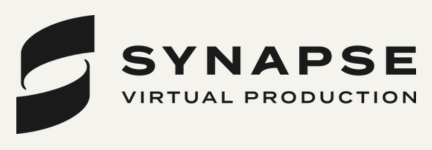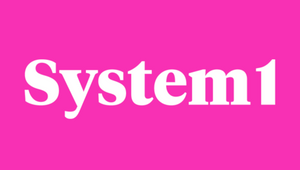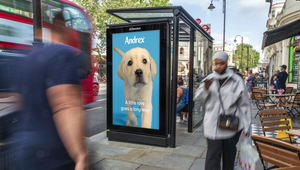
System1’s Andrew Tindall Reveals Zero Aussie Radio Ads Have Strong Brand Recognition: “Really Surprising”

Zero Australian radio or audio advertisements have “strong or exceptional brand recognition, which is really surprising,” according to System1 research conducted in partnership with radio industry body Commercial Radio and Audio (CRA).
The creative effectiveness business tested 56 Australian audio campaigns with over 8,000 Australian listeners across the past six months, “and we've got quite a surprising finding,” explained Andrew Tindall, System1’s senior vice president of global partnerships, on-stage at CRA’s HEARD conference.
“We've actually found no audio campaigns with strong or exceptional brand recognition, which is really surprising. Actually, the average brand recognition from an Aussie radio campaign is 68%, so nearly a third of people can't recognise what brand [the ad is for].”
System1’s testing system tracks consumers’ emotional responses second by second throughout an ad, then gives the ad a star rating built on how positive the listener feels afterwards, designed to predict the long-term effectiveness of an ad.
“We've tested a lot of audio campaigns down in Australia, and 50% of them are actually one star,” he said. That means half of Australian audio ads won’t change listener behaviour.
Last year at HEARD, Mark Ritson presented research that showed devoting just 11% of a campaign’s media budget to radio would double its effectiveness. Andrew, who is visiting Sydney this week from his native London, is aiming to take that research further, proving that improved creative executions would double that effectiveness again, or “double the double.”

“There's a huge opportunity here. We expect these one star campaigns to be unable to change behavior. Yet we're still seeing this double effect,” he said.
“So if we manage to just get all of your campaigns that leave people feeling more positive, we will see a doubling of that double.”
Creativity is the primary weapon in marketers’ control to influence their return on investment, he said, and radio is an important medium because it is affordable, has mass reach, and is proven to build trust. According to the new research, ads that build memory structures through effective sonic branding are key to “doubling the double”.
“Radio campaigns and audio campaigns with higher than average brand recognition lead to, coincidentally, double the brand trust gains,” he said.
“So literally, if you want to take advantage of the trust building, brand building, power of radio, all you have to do is get your brand recognised on that channel. So that involves using your sonic brand assets that are famous and unique early and often enough in the radio campaigns.
“People need to slow down and say their brand name clearly. It sounds stupid, but when you orientate yourself to the ears of the consumer, they don't sit with your brand all day long.”

Another way to “double the double” is to remain consistent across the media mix. Andrew noted marketers and agencies should not view “interesting” and consistent creative as mutually exclusive, arguing for long-term brand building through platforms that build memory structures.
“If you keep the same executions across campaigns, if you stick to the same positionings and ideas over years, and if you execute campaigns across the media mix, you literally get more brand effects and actually more business effects.”
He pointed to ads which performed well as part of System1’s research: BCF’s ‘A to Z’, Bing Lee’s ‘Birthday Sale’, Transport Accident Commission’s ‘Dumb Ways to Die’, Aldi’s ‘Panettone Christmas’, Bupa’s ‘Contagious Smile’, and Victoria Bitter’s ‘Theme Song’ from 2005.
The latter was the most successful campaign in the testing, with a 4.1 star rating. Ads with strong star ratings also increased listeners’ perception of frequency, which will “literally stretch your ESOV [excess share of voice] advantage and work your media dollars harder”.

“We found that campaigns with higher than average star ratings, those that left people feeling more positive and not neutral or negative, they had people thinking they heard the ad more.”
In a separate panel discussion about the effectiveness of radio ads, OMD’s chief investment officer Marelle Salib urged the industry to “be better” and focus on “fit for platform” creative.
“The radio ads have been the same since the 1920s and there's a huge opportunity there,” she said. “We know that there's a lot of value being left on the table that's not about spending more, it's about thinking about how you optimise and make those small tweaks to drive that incrementality now.”
On that same panel, moderator Rose Herceg, WPP AUNZ president, said radio is “one of the oldest media around, and yet it's somehow new again, and it's right in front of us.”
Carat’s Olivia Martini, a client partner on Dan Murphy’s, mentioned Mark Ritson’s assertion that radio requires just 11% of a campaign’s media budget to deliver double the effectiveness. “That's equivalent to most of your test and learn portion of your budget that sits in that 10 to 15%,” she said, “so give it a go.”
Strong radio ads delivered a 92% uplift in social sharing according to System1’s study, a 1.3x boost in word-of-mouth recommendations, and a 1.66x increase in ad recall per 100 GRPs (gross rating point). The research also showed audio ads generate 1.15x more emotional intensity than visual ads at comparable exposure levels and are 20% more likely to be recalled.
System1 advised using creative devices like melodic music, dialogue and character-building, and distinctive assets.
“We looked at the inclusion of these creative features in the campaigns, and we looked at how they impacted ad recall in market,” Andrew said. “ They build more memory structures, and they leave listeners feeling more positive. They're key to doubling the double.
“Audio advertising should put on a show. It should be more broadly entertaining to leave people feeling more positive.”

CRA CEO Lizzie Young added the System1 research “proves the power of radio when it’s creative, memorable, and deeply connected to the brand.”
“Great radio advertising isn’t just heard, it’s remembered,” she said.
“Brands that embrace creative fluency will see stronger recall, more engagement, and ultimately, better business outcomes.”












